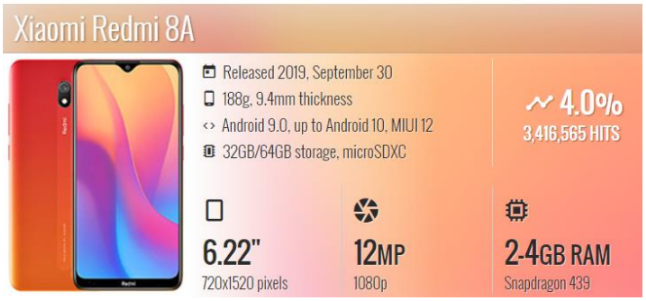Detecting fake devices isn’t as easy as it used to be.
There was a time when the red flags used to be clearly visible – random clicks at odd hours, installs with zero engagement, or sudden traffic spikes from unfamiliar regions. Those patterns made it simple to tell when bots were at play.
But fraudsters have now gotten smarter. They have evolved beyond obvious tricks. Instead of relying on easily traceable bot behavior, they now use sophisticated techniques to pretend to be real users on real devices. This next-level masking of fake devices as real is known as device spoofing, and it’s quietly reshaping how ad fraud hides in today’s campaigns.
Unlike traditional bot traffic, spoofed devices mimic genuine user behavior so well that even the most trusted attribution platforms struggle to tell them apart. The result? Campaign dashboards that look real but are actually filled with fake interactions.
In this article, we’ll break down
- What device spoofing really means?
- How it manipulates your campaign data?
- Why is it one of the hardest forms of ad fraud to detect?
We will also talk about how validating devices, not just clicks, can help restore accuracy to your marketing data, and ensure your ad budgets are utilized on real audiences.
What Exactly is Device Spoofing? Why Should You Care?
Device spoofing is a sophisticated ad fraud technique where fraudsters disguise fake, old, or low-quality devices to appear genuine, tricking marketers into counting them as real users.
Fraudsters manipulate technical details like device IDs, operating system details, user-agent strings, browser information, etc., making it difficult for ad platforms to detect them as fake devices.
This means, while you believe your ads are reaching real people, a portion of that audience might actually be nonexistent. The results on your dashboards might be the result of fabricated activity that looks normal on the surface.
Moreover, device spoofing doesn’t just manipulate campaign data, but also wastes ad spend, directly impacting your entire marketing strategy.
Here’s how:
- Budget Drain: Ads reach fake users, inflating your CPMs and CPCs without driving real engagement.
- Misleading Campaign Optimization: Fraudulent signals mislead your algorithms and optimization decisions, pushing budget toward invalid sources.
- Corrupted Attribution: Spoofed devices distort your conversion data, making good channels look bad, and bad ones seem good.
- Eroded Trust: When campaign numbers look great but conversions don’t follow, stakeholders lose confidence and clarity in reported ROAS or MMP dashboards.
Inside the Fraudster’s Machine: How Device Spoofing Really Works
Now that you know device spoofing is a smarter way fraudsters use to fake real-looking users. Let us break down how they do it:
1. Emulating Real Devices
Fraudsters start by using software called emulators. These programs copy the behavior of real devices, phones, or tablets, right down from the model name to screen size, and operating system. With a few clicks, they spin up thousands of “devices” that appear completely legitimate to an ad network.
2. Faking Device Data
Next, they manipulate the details that identify a device online like the user-agent string (which tells browsers or apps what device and OS are being used), device ID, or even IP address. By altering these data points, they trick platforms into believing the activity is coming from a real user’s phone, not a simulated one.
3. Generating Fake Activity
Once the spoofed devices are set up, fraudsters make them perform “normal” actions like viewing ads, clicking on ads, or even completing installs. They program these emulated devices to behave just like real users – opening apps, staying on pages for realistic amounts of time, or mimicking engagement patterns. This is what makes spoofing so hard to catch.
4. Mixing Fake Traffic with Real Traffic
To stay hidden, fraudsters blend these fake signals with legitimate user data. For instance, real app installs might be followed by a wave of spoofed ones that look similar enough to pass as genuine. Because the volume and timing appear natural, most attribution tools fail to tell the difference.
The result? Campaigns appear to perform well. Clicks are recorded, installs are counted, and engagement looks strong, but unfortunately, much of it comes from devices that don’treally exist.
Why Traditional Ad Fraud Detection Tools Fail?
Most marketers assume their attribution or analytics partners are already taking care of ad fraud detection. But that’s not the case, especially when it comes to device spoofing.
Traditional fraud detection methods were built to spot obvious patterns, not sophisticated ad fraud techniques. Here’s where they usually fall short:
1. Attribution platforms aren’t built for device-level validation
The main job of attribution platforms is to assign credits, not verify authenticity. They track who clicked and who installed, but they rarely check whether the “device” behind that click or install is even real. So, if a spoofed device pretends to be a genuine one, it slips through unnoticed.
2. MMP filters focus on surface-level anomalies
Mobile Measurement Partners often rely on rule-based detection, like flagging duplicate IPs or abnormal install rates. But device spoofing hides beneath those metrics, altering identifiers in ways that look completely normal to these basic-level filters.
3. Manual reviews can’t keep up
Even if a team tries to investigate irregularities like abnormal CTRs or unusual install ratios manually, the sheer scale and speed of spoofing make it nearly impossible. Fraudsters simulate thousands of “devices” every hour, far faster than a human team could analyze.
Therefore, fighting device spoofing requires advanced ad fraud detection solutions that have the capability to go deeper than surface-level metrics to detect anomalies and validatedevices in real-time.
Know more about why attribution platforms can’t tell you the full truth about mobile ad fraud
How mFilterIt Helps Validate Devices, Not Just Clicks
Most ad verification tools stop at surface-level checks by validating impressions, clicks, or installs. On the other hand, our advanced ad fraud detection solution goes beyond basic checks to identify fraud patterns and validate the authenticity of every interaction across the entire user journey for both web and app campaigns.
Here’s how device-level validation ensures campaign integrity for marketers:
Our ad fraud detection solution processes billions of data points daily through AI and machine learning models that understand how real devices behave. This intelligence helps identify even the most sophisticated spoofing tactics used to manipulate advertising systems.
1. User-Agent Intelligence
Detects mismatched device–OS combinations (e.g., devices claiming Android 6 when the model shipped with Android 9).
Recently, during one of our analysis, our tool detected a surge of ad impressions coming from devices claiming to run Android 6. On the surface, that seemed fine, until our system cross-checked the actual device model metadata.
It turned out that these devices were originally released with Android 9, supporting upgrades to Android 10 or 11.
This technical mismatch, an outdated OS appearing on a newer model, was a clear red flag. It revealed that fraudsters had manipulated the device identity to make fake traffic appear genuine, hoping to slip past standard detection systems.

2. Behavioral Fingerprinting
Profiles user behavior across sessions to separate humans from automated emulations.
3. Cross-Network Correlation
Identifies coordinated spoofing attempts spread across multiple ad sources.
4. Full-Funnel Validation
Monitors every stage of the user journey, ensuring authenticity at each step and delivering a true picture of performance.
5. Unified View & Transparency
Flags suspicious traffic instantly, consolidates validated data into a single dashboard so marketers can see genuine interactions, optimizeconfidently, and make informed, data-backed decisions.
Conclusion: Clean Data Starts with Verified Devices
Device spoofing has quietly become one of the most deceptive forms of ad fraud, because it hides in plain sight. It doesn’t just waste budgets; it damages the very foundation of marketing decisions by corrupting data accuracy and performance visibility.
The only way to fight it is to go beyond surface-level checks – clicks, installs, etc. to verify the authenticity of every device interacting with your ads.
Therefore, with mFilterIt’s advanced ad fraud detection capabilities, marketers gain the clarity and confidence to trust their campaign data, ensuring every impression, click, and conversion truly comes from a real user.
So, don’t let fake devices distort your success metrics.
Book a quick call with our experts to see how real-time device validation can protect your campaigns and maximize your ad ROI. mf
Author
-

With 15+ years in Digital and Telecom, Shiraz Noor combines expertise in technology, strategy, and innovation. A strong advocate for digital transformation, he simplifies complex trends into actionable insights, sparking conversations that help professionals stay ahead.


